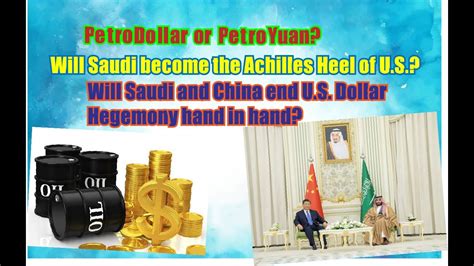The end of the 50-year-old petrodollar pact between the United States and Saudi Arabia is an event of monumental significance. In this long-standing arrangement, Saudi Arabia agreed to sell oil exclusively in U.S. dollars and invest in U.S. Treasuries in return for American military protection. This deal not only solidified the dollar’s dominance as the world’s reserve currency but also provided the U.S. with a source of financial stability and influence. As the pact concludes, various questions arise regarding economic stability, geopolitical alliances, and the future balance of power.
Commentators from various backgrounds have weighed in on the potential outcomes, pointing out that while the immediate effects might not be drastic, the long-term repercussions could be profound. One user noted that the expiration of the pact doesn’t necessarily mean Saudi Arabia will abandon the dollar overnight. In the comments, the idea that Saudi Arabia and other nations are diversifying their investments away from U.S. Treasuries was presented with a mix of skepticism and cautious acceptance. This shifting investment strategy could subtly underpin more significant economic transformations over time.
A particularly critical point is the broader discussion around the U.S. debt servicing costs relative to its government revenue. Several commenters debated this, highlighting the disparity in figures presented. While one commenter incorrectly stated that debt interest costs are approaching the entirety of U.S. revenue, corrections were quickly provided, showing that interest costs are significant but not all-consuming. For 2023, U.S. government revenue was approximately $4.44 trillion, with debt interest around $650 billion. This conversation underscores the intricate balancing act that U.S. fiscal policy must maintain, especially when global confidence in the dollar faces potential erosion.
The transition to a more diversified global currency system may not happen instantly but will likely evolve over a longer period. As one commenter keenly observed, shifts like these do not manifest immediate consequences akin to a falling meteor but rather unfold gradually over years or decades. They emphasized the importance of monitoring how geopolitical maneuvers, such as China’s increased influence and Saudi Arabia’s strategic diversification, might reshape trade norms and currency preferences.
Another insightful angle is the technological and industrial backdrop of today’s global economy. Unlike the 1970s, when the petrodollar system was established, the current economic landscape features global titans in technology rather than oil. Companies like Amazon, Google, and NVIDIA are the new juggernauts, driving a different kind of economic demand. The relevance of this shift might buffer the impact of the petrodollar’s dissolution – the U.S. maintains appeal due to its robust tech sector, reinforcing dollar demand through innovation rather than just oil trade.
The narrative regarding the decline of U.S. dominance and dollar hegemony brings forth a cautionary outlook. Several users highlighted the strategic importance of re-industrializing the United States and tackling its burgeoning debt. The consensus suggests a nuanced perspective: while the global appetite for the dollar might wane due to market diversification and countries opting to trade in alternative currencies like the yuan, this change is gradual and unlikely to disrupt the global financial system in the short term.
Finally, the geopolitical implications are not to be understated. As mentioned by commenters, the U.S.-Saudi relationship has broader dimensions, including military alliances and political ties, that could influence future agreements. With ongoing global developments such as the Russia-Ukraine conflict and shifting Middle Eastern dynamics, a multi-dimensional view is necessary. The pact’s ending is one piece in a complex puzzle involving trade, defense, and foreign policy. As the world watches how the U.S. and Saudi Arabia navigate this new reality, the adaptability of their strategies will be crucial for maintaining their spheres of influence.


Leave a Reply